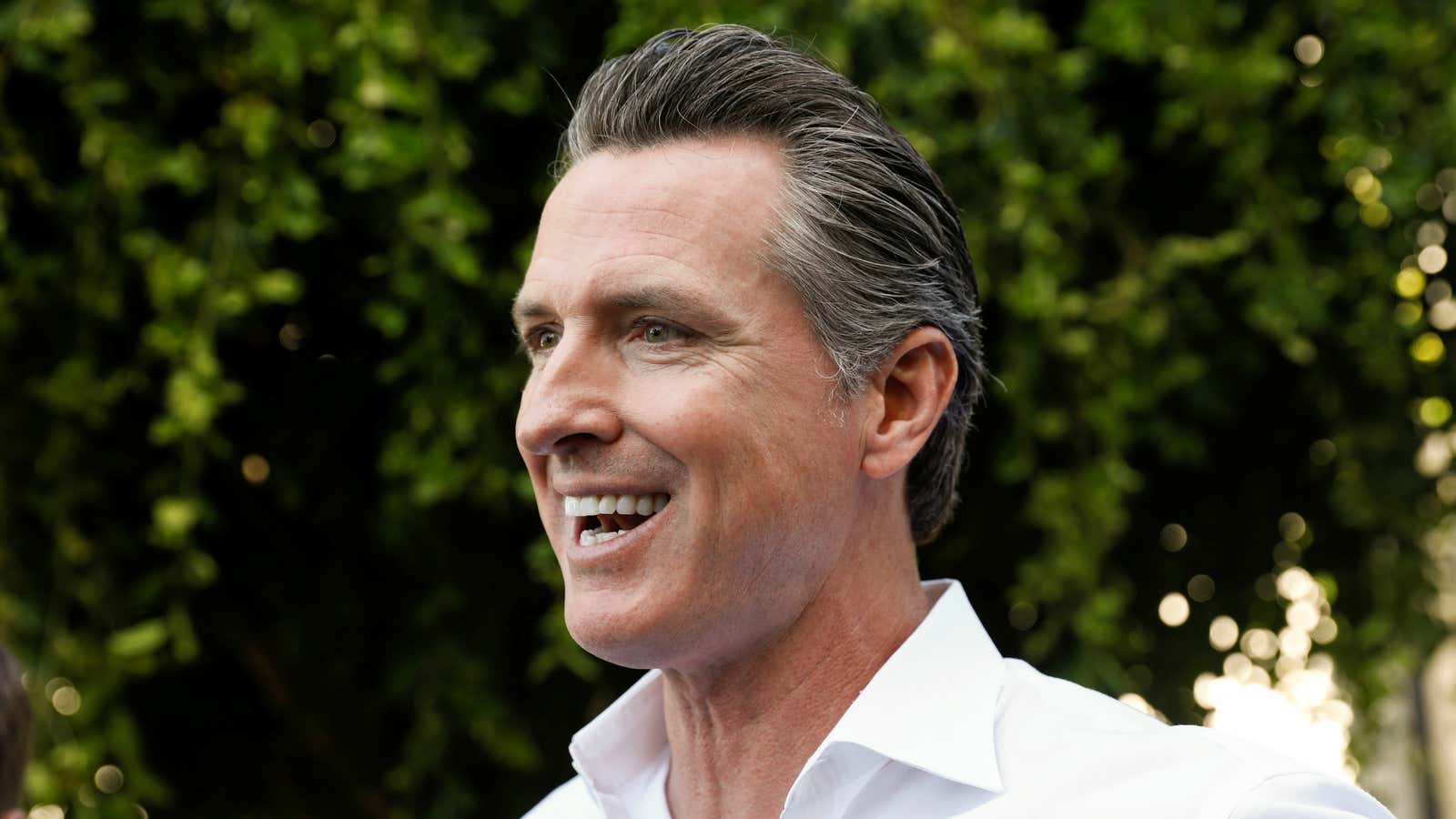In January 2019, Gavin Newsom will become the governor of California. It’s a big job. The state has a population of about 40 million people and a GDP of about $2.8 trillion. If it were a country, it would be the world’s fifth-largest, just ahead of the UK, France, and India.
From education to housing to health insurance, Newsom has set out a remarkably ambitious series of goals. What he chooses to prioritize will have profound consequences for Californians, and indicate how progressives might govern nationally if they take the White House in two years time.
Newsom, a 51-year-old Democrat with Hollywood-ready looks, first came to prominence as mayor of San Francisco from 2004 to 2011. Known at the time as a business friendly moderate, Newsom governed the city as more of a progressive than expected. Most famously, early in his first term, he ordered the city’s clerk to issue same-sex marriage licenses, making San Francisco an early leader in pushing for marriage equality. He also signed into law a large expansion of healthcare access for poor residents. Newsom has been California’s lieutenant governor for the past eight years under Jerry Brown, who he will replace. As lieutenant governor, he helped pass initiatives for stricter gun-control laws and to legalize marijuana.
Newsom will inherit a thriving economy. Though the state saw tough times after the global financial crisis, it has recovered robustly. Boosted by Silicon Valley, California’s economy is humming. From 2014 to 2017, the state’s inflation-adjusted GDP grew at an annual pace of more than 3.5% per year, far outpacing the US as a whole. As a result of this economic boom, the state’s revenues increased faster than spending. The state’s 2018-19 budget features a $9 billion surplus.
But all is not well in the Golden State. Accounting for the cost of living, California has the highest poverty rate in the US. It’s also a leader in income inequality, which is only increasing. The state has a rapidly growing homelessness problem. Many of California’s thorniest problems can be traced to rising housing costs.
During his campaign, Newsom talked a lot about fixing inequality. He says his approach will emphasize investing in kids. “I’m not a redistribution Democrat, but I am a predistribution Democrat,” he told Capitol Public Radio. Newsom says this means expanding access to prenatal care, universal preschool, and automatic college savings accounts for students in Kindergarten.
In order to take on the state’s housing problems, Newsom says California needs to build 3.5 million new units by 2025. It’s a long shot, and housing experts call it “wildly unlikely.” Newsom says it can be accomplished by boosting funds for subsidized housing and cutting red tape for new construction. He also thinks it may be necessary to penalize cities for NIMBYism by making transit funding dependent on whether localities meet the state’s housing goals.
Perhaps Newsom’s most ambitious goal is to create a single-payer healthcare system for California. His proposal would insure both legal residents and undocumented immigrants. The version of single-payer insurance that Newsom supports would cost the state about $400 billion a year. It would likely be paid for by a hefty hike in the state’s payroll or sales tax.
Most of Newsom’s plans involve spending a lot of money, so if he wants to achieve his goals he will also need to raise a lot of revenue. For most large tax increases, California’s requires that voters get a say in a referendum. Newsom has a lot of big ideas, and now he must convince Californians that they are worthwhile.
